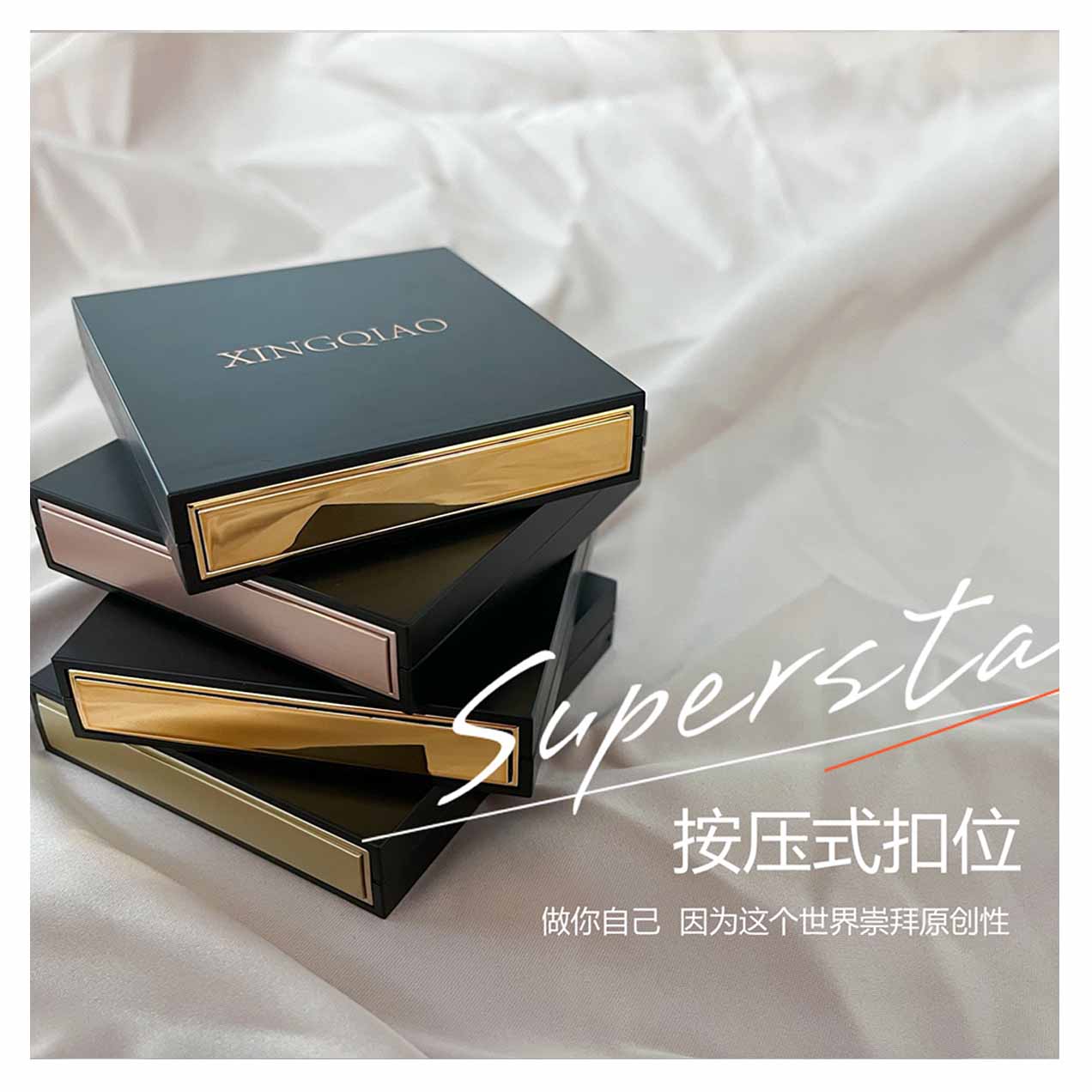
Cosmetic Packaging for Compact Powder Cases: Design, Materials, and Trends
Introduction
Cosmetic packaging plays a crucial role in the beauty industry, serving both functional and aesthetic purposes. Among the various types of cosmetic packaging, compact powder cases are particularly significant due to their widespread use and the need for durability, convenience, and visual appeal. This paper explores the key aspects of compact powder packaging, including design considerations, material choices, sustainability trends, and consumer preferences.
1. The Importance of Compact Powder Packaging
Compact powder is a staple in many makeup routines, offering benefits such as oil control, setting foundation, and providing a matte finish. The packaging must protect the product while ensuring ease of use, portability, and an attractive presentation.
1.1 Functional Requirements
- Protection: The case must shield the powder from moisture, air, and physical damage.
- Portability: Compact size and secure closure (e.g., magnetic or snap-shut mechanisms) are essential.
- User-Friendly Design: Mirrors, applicators, and refillable options enhance usability.
- Durability: The packaging should withstand daily handling without breaking or wearing out.
1.2 Aesthetic Appeal
- Brand Identity: Packaging design communicates brand values, whether luxury, eco-friendliness, or minimalism.
- Visual Attractiveness: Colors, finishes (matte, glossy, metallic), and decorative elements influence purchasing decisions.
2. Materials Used in Compact Powder Packaging
The choice of materials impacts sustainability, durability, and cost. Common materials include:
2.1 Plastic
- Pros: Lightweight, cost-effective, versatile in design (transparent, colored, textured).
- Cons: Environmental concerns due to non-biodegradability; some brands opt for recycled or biodegradable plastics.
2.2 Metal (Aluminum, Stainless Steel)
- Pros: Durable, recyclable, premium feel.
- Cons: Heavier and more expensive than plastic.
2.3 Glass
- Pros: Luxurious appearance, recyclable, chemically inert (does not react with the product).
- Cons: Fragile, heavier, and more expensive.
2.4 Sustainable Alternatives
- Bamboo: Biodegradable and lightweight but less durable.
- Paperboard/Cardboard: Often used for outer packaging; can be recycled or composted.
- Bio-Based Plastics: Made from plant sources (e.g., cornstarch), offering a greener alternative.
3. Design Innovations in Compact Powder Cases
3.1 Refillable Systems
- Many brands now offer refillable compacts to reduce waste. Consumers can purchase powder refills instead of a new case each time.
3.2 Magnetic Closures
- Provides a secure and elegant closing mechanism, enhancing the premium feel.
3.3 Customizable Designs
- Some brands allow consumers to personalize cases with engravings or interchangeable covers.
3.4 Multi-Functional Compacts
- Includes built-in brushes, blushes, or concealers for on-the-go touch-ups.
4. Sustainability in Compact Powder Packaging
With growing environmental awareness, brands are adopting eco-friendly packaging solutions:
4.1 Recyclable Materials
- Aluminum and glass are highly recyclable, while some plastics (e.g., PET) can be repurposed.
4.2 Minimalist Packaging
- Reducing excess layers (e.g., eliminating unnecessary outer boxes) decreases waste.
4.3 Biodegradable & Compostable Options
- Packaging made from plant-based materials breaks down naturally, reducing landfill impact.
4.4 Refillable & Reusable Models
- Encourages consumers to keep the outer case and only replace the inner product.
5. Consumer Preferences and Market Trends
5.1 Luxury vs. Affordable Packaging
- High-end brands focus on metal or glass with intricate designs.
- Drugstore brands prioritize cost-efficiency with plastic or lightweight materials.
5.2 Gender-Neutral & Inclusive Designs
- More brands are moving away from overly feminine designs to appeal to a broader audience.
5.3 Smart Packaging
- QR codes for product information, NFC technology for authenticity verification.
5.4 Travel-Friendly Features
- Slim profiles, secure closures, and TSA-approved sizes are increasingly popular.
6. Challenges in Compact Powder Packaging
6.1 Balancing Cost and Quality
- Premium materials increase production costs, affecting retail pricing.
6.2 Environmental Regulations
- Governments are imposing stricter rules on plastic use, pushing brands to find alternatives.
6.3 Counterfeit Concerns
- Luxury brands invest in tamper-proof seals and unique packaging designs to prevent fakes.
7. Future of Compact Powder Packaging
7.1 Increased Use of Sustainable Materials
- More brands will adopt biodegradable, recycled, and plant-based materials.
7.2 Smart and Interactive Packaging
- Augmented reality (AR) features, temperature-sensitive inks, and digital integration.
7.3 Customization & Personalization
- 3D printing may allow consumers to design their own cases.
7.4 Zero-Waste Initiatives
- Brands may introduce take-back programs where old compacts are recycled or repurposed.
Conclusion
Compact powder packaging is a dynamic field that blends functionality, aesthetics, and sustainability. As consumer preferences shift toward eco-conscious choices, brands must innovate with materials, designs, and smart features to stay competitive. The future of compact powder cases lies in sustainability, personalization, and technological integration, ensuring both practicality and environmental responsibility.
By understanding these trends, manufacturers and designers can create packaging that not only protects and enhances the product but also aligns with the evolving demands of the beauty industry.

Copyright © 2022 Jinhua Xingqiao Plastic Industry Co., Ltd
เว็บไซต์นี้ใช้คุกกี้เพื่อให้แน่ใจว่าคุณได้รับประสบการณ์ที่ดีที่สุดบนเว็บไซต์ของเรา
ความคิดเห็น
(0)